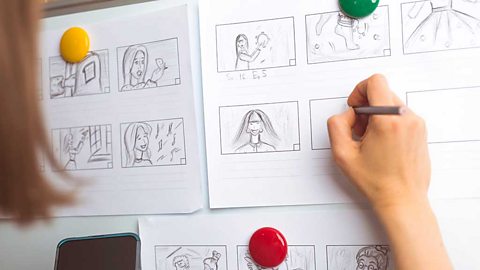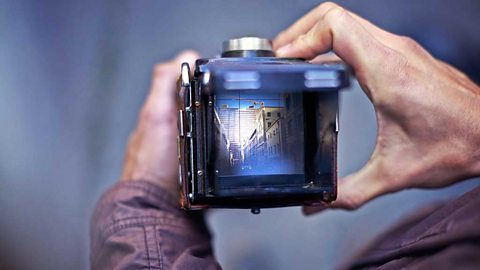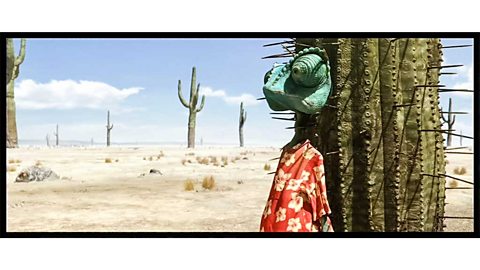Storyboarding

Plan the film first - a common technique is to use storyboards. These are pictures of what different scenes will be included and how they will look. Most film-makers create a script first and then visualise this into a storyboard.
A storyboard usually includes information to help produce the film by showing what the film-maker has in mind for each scene. This will include the camera angle, framing, position, movement, shot progression and dialogue.
Camera framing, positioning and angles

A film-maker will have an idea of what they want the scene to look like. They will sketch this out in planning and use this to position and angle the cameras.

Image caption, A low angle shot gives a character a sense of power or strength, or can make viewers feel a sense of fear or dread
Image caption, A high angle shot can give the character a sense of inferiority or to make the viewer feel like they're looking down at the action below
Image caption, A Dutch tilt shot is where the camera is angled slightly. It can create a sense of disorientation or tension and can help add emphasis on the subject.
Image caption, An overhead shot is directly over the subject. It can be used to give a тАШgodlikeтАЩ point of view.
1 of 4
It can also help to think about camera movements. The key ways a camera can move are:
- panning - keeping the camera position fixed but turning it from side to side
- tilting - keeping the camera position fixed but tilting it up and down
- zooming - making objects and subjects appear closer or further away
- tracking shot - moving the camera in a horizontal motion
- pedestal shot - moving the camera in a vertical motion
- dolly shot - moving the camera nearer or closer to a subject
Dialogue
Snippets of the script can be included in the storyboard to add the film dialogue to the drawings or sketches. As the storyboard is only a series of images it is not possible to include the entire script, so it is only used in key places.
Aspect ratio
When you make a film, think about the size of the shot you use as this can alter the look of the end product.
There are a few main aspect ratios used in film-making:
- 2.35:1 is also known as cinemascope and this is a very wide angled view. It was regularly used in Western movies and is the aspect ratio that would be used for a film that had a lot of open landscape shots.
- 1.85:1 looks slightly narrower and taller. This is often used in drama and comedy when the focus of the film is mainly on the characters rather than their surroundings.
- 16:9 is used for most standard modern TV and online streaming shows.
